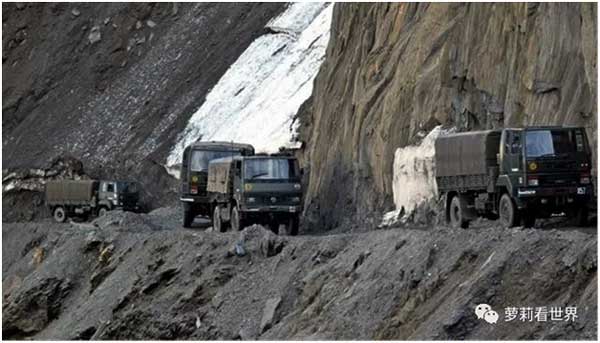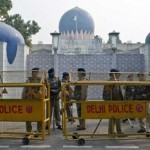IDR Blog
Cohesion in the Army: The Battle Winning Factor

In military sociology literature, the Standard Model on military cohesion can be envisaged as a set of concentric circles, with the inner circle housing the primary group. The primary group is the section/platoon, with the secondary group, comprising the company and battalion, enclosing it. These are nested within the organization that can be equated with the formation, which is, in turn, ensconced in the institutional embrace of the army. Finally, though not in the model per se, an outer, societal circle is worth adding.
Theory on cohesion has it that cohesion within the primary group – referred to as horizontal bonding – contributes to combat effectiveness: greater the cohesion, greater the combat effectiveness. The vice versa is also true – greater the combat effectiveness, greater the cohesion – when the primary group is vertically integrated with the hierarchy through the leadership channel. The chain of authority aligns the task of the primary group with the operational mission. The leader is thus at the intersection of horizontal bonding and vertical integration.
The outer circles can be visualized as the shaft of the spear in their support to primary and secondary group cohesion with the battalion and its subunits at the spear tip. In addition to being supportive of the secondary and primary groups, the outer circles – society, army, formation – have also to forge and sustain cohesion within their respective self, since they also have to withstand the test of conflict. If they disintegrate, then cohesion at the lower levels are liable to dissipate likewise. Therefore, cohesion has to attend the nation, the army and its subordinate formations.
Here, cohesion at the upper levels is not covered, since the focus is on cohesion in the lowest level: secondary and primary group. Suffice it to mention that cohesion enhancement measures at the higher levels must not be at the cost of or impinge on the cohesion of lower levels. Only the supports to cohesion covered here.
Supports for Cohesion
Societal support for the army is evident in the regard accorded to the military. Culturally, the kshatriya (warrior caste) has always had a pride of place. India’s renowned epics narrate tales of martial prowess and daredevilry. The continuing regard is easy to see in the turnout at the funeral of martyrs at their home stations. The institution of the war memorial at New Delhi and the museum coming up close by are expressions of support.
The institutional support is evident in the operational focus of the military, its provision of the weapons, equipment and material necessary for the prosecution of the war. The military has not only consistently proven up to the demands of national security, most recently in stalling Chinese designs in Ladakh, but is currently in a substantial reorientation from the western to the northern front. This operational churn translates downwards in a renewed emphasis on the primary role, the conventional role of preserving territorial integrity and sovereignty, largely through deterrence. Such a focus imparts an immediacy that is supportive of cohesion.
Organisational support is in translating this doctrinal shift into reality. Integrated battle groups are forming, attenuating the premium on the operational task. These are then practiced to perfection in exercises, field firing and training opportunities. This rigmarole of peace time is cohesion imparting since it brings the formations’ into the joint and combined arms’ implementation of doctrine and its evolution.
While this privileges the operational task, formations also lend a social prop to cohesion, such as by observing the anniversaries of battles to reaffirm the marital commitment. Such measures along with their proficiency in the operational role imparts elan to the formation. This has knock-on benefit for cohesion at the battalion and below levels. It bears underlining here that higher echelons leaning on the lower in a manpower guzzling manner detracts from cohesion forming at the lower levels on account of manpower turbulence leading to a deficit in forging of social affiliations necessary for bonding, especially in peace stations.
The consequential level?
The secondary group level – battalion level and its subunits – is usually taken as the consequential one, since it directly provisions the primary group with the social and operational necessities. The social props include observing battle honour days, mandir parades, running langars, NCO clubs, family welfare etc. Such measures routinise the face-to-face meetings and informal interactions necessary for the primary group members to form affiliations and friendships. Significantly, the operational tasking also filters down from this level in the form of a mission for the primary group. Organised training supervised at this level helps deepen the social bonds by instilling trust and teamwork within primary groups.
The cohesion of the primary group thus has plentiful support within the army. Even if not present to necessary levels ab initio, the test of combat is such that cohesion is also forged on the job, with primary group members forging teams while mobilizing and under fire. The surfeit of cohesion at the primary group is self-evident in the battle field showing, for instance on the Kargil heights. The battalions involved already had coherent primary groups, some having been brought over from the Valley floor and some when de-inducting from Siachen. Where the army suffered initial knocks, such as at Golden Temple, the early phase of the Jaffna battle, in the initial probing action at Kargil and in the early years of the Rashtriya Rifles’ raising, primary group cohesion was up and humming at the crunch.
Primary group bonding is critical. Combat effectiveness this generates translates into cohesion for the upper levels. Unless the beaches are taken in an amphibious assault, there can be no success. Unless the trench line is not breached and the bunkers were taken, the success signal cannot be sent up. Individual expertise and daredevilry spring from and anchor on a cohesive primary group. Nurturing it is a sine qua non for a ticking army.
Role of leadership
Tony Ashworth pointed to the possibility of cohesion having an underside in his subtitle to his book: Trench Warfare 1914-18: The Live and Let Live System. That cohesive groups can also subscribe to a counter-narrative became obvious in the Vietnam War. Gabriel and Savage’s well-known study of the war, Crisis in Command: Mismanagement in the Army, brings this out clinically in their references to shirking and fraggings. This brings to the fore the role of the leader.
The showing of 16 Bihar at the onset of the Ladakh crisis is a case to point on what the ingredient cohesion does to and for the fighting man, making it a magic battle-winning ingredient. A year on from Galwan, the manner Colonel Santosh Babu’s disparate outfit fought off the Chinese is instructive. Elements from the artillery and another unit were in his patrol, but that did not come in the way of their showing under his task-oriented leadership. His battalion’s response under the lion-like Lamb bears testimony to leadership being a key to cohesion, and what cohesive primary and secondary groups deliver even under the sudden onset of contingency. Clearly, the unit looked after its men as a Kote NCO would the weapons on his charge.
Not only is a leader to forge and sustain cohesion, but to also ensure that it is articulated positively in line with the mandate and mission. Broadly, while the non/junior commissioned officers may be charged with the former, the latter aspect can majorly rest with officers. Battalion level priorities must include creating opportunities for the bonding enhancers: social settings and task-oriented training. The former instils the camaraderie and the latter uses this social capital for forging teams. Even if the opportunity for the former is limited in pressure-cooker environments of cantonments, the latter is sufficient. Both officer and below-officer-level leaders’ participation in and supervision of such training, instils both horizontal and vertical integration.
Conclusion
Cohesion thus must figure in key result area slides of administration inspections and must be observable on training. Formations must instigate it and support it. This is relatively easier done when the threat environment is relatively high, for example during Operation Ablaze, the mobilization phase of the 1965 War, or in the six months run-up to the 1971 War. The situation is not as intense now, but the two-front threat environment is no longer merely a perception but an impending reality. The army has adopted a punitive deterrent posture on the Pakistan front and credible deterrence against China. The latter has compelled forming of two Mountain Strike Corps and the central sector is to get an additional division. All this tumult must not obscure that the primary group will finally be relied on for results. The training that reorienting operational roles entail must be used optimally to enhance cohesion at all levels.
As a final word, while considerable theory on cohesion exists, it is Western. In keeping with the prime minister’s exhortation on indigenous knowledge generation, the firewall between academia and the military must be lowered for a look through the military sociology lens at the military to answer the question: How does cohesion make the army tick?
Courtesy: https://www.claws.in/cohesion-in-the-army-the-battle-winning-factor/
Post your Comment
One thought on “Cohesion in the Army: The Battle Winning Factor”
 Loading Comments
Loading Comments




The bedrock of cohesion is interpersonal trust bordering on blind faith. The development of high levels of knowledge and soldiers skills in the unit and its subunits is the next ingredient. Shared operational history is the third essential that creates bonding and a sense of shared identity. Of these three essentials, the first one is the most important job of the officer. He creates and sustains unit climate based on integrity, candour and moral courage to gain and keep the trust of his command. He demonstrates time and again that he works selflessly for unit effectiveness and msn accomplishment, disregarding career considerations like ACRs, if a toxic superior offr is at the helm. This requires character that values courage, competence, commitment, candour, integrity, loyalty, self abnegation, and self sacrifice. However, these values of the profession of arms are rare in the parent society, and hence, equally rare in its army. Therein lies the reason for the lack of trust and cohesion in the Indian Infantry today.